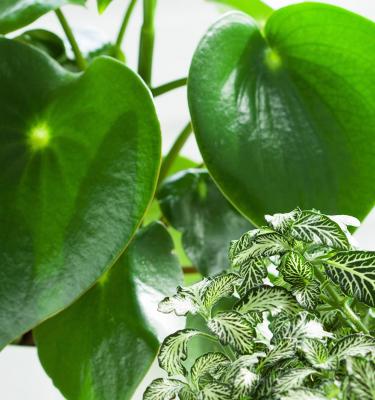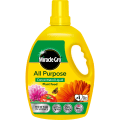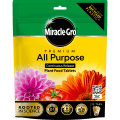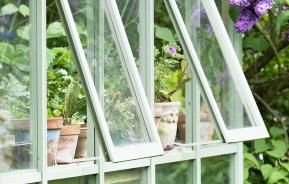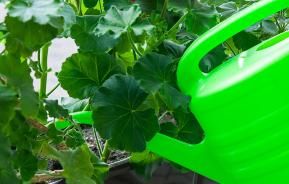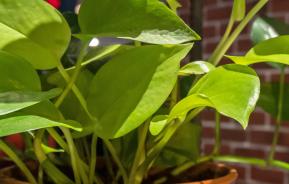It’s no secret that adding potted plants to space can aesthetically upgrade a room. Probably lesser known facts are that plants help cleanse household air, and are also proven to increase productivity. So don’t wait for summer to put those green fingers to use – now’s as good a time as any.
Setting up
Remember, you can achieve indoor gardening in a greenhouse as well. But if you don't have a gardening spot, or you are a city bod, then you should find this post especially helpful.
One good part of indoor gardening is you can use as little or as much space as you want - lots of plants, including herbs and tomatoes, can be grown on a windowsill. You can use tables, shelves, or just areas of the floor - remember flooring is important, as there will be inevitable drips of water that will need to be caught, so pick your flooring wisely. Most garden plants can be grown in an indoor environment (as long as you have space), and growing groups of plants that share similar needs in terms of light, humidity and water make sense.
The importance of light
Photosynthesis (the conversion of light into food by plant leaves) is essential for plants to grow. So, good light is important and you may need to buy a grow light. Even if you are setting up plants on a window sill, winter may not provide enough sunlight needed, unfortunately.
Plants absorb specific wavelengths of light through photoreceptors – the light you expose your indoor garden to needs to match the wavelengths of the sun (nope, light bulbs won’t do it). Regarding positioning, the grow light will need to be placed close to the plant without burning the leaves. Aim to expose your indoor garden to approximately 15 hours of light.
The hormone known as florigen controls budding and flowering, and long-day plants need about 14-18 hours of light to produce enough florigen to flower. Short day plants, however, only need about 10-13 hours of light - any more and the florigen may be destroyed, preventing blooming. Tip: If your indoor garden plants have small leaves, thin stems, or the colour of the plant is lighter than usual, your garden may not be getting enough light.
Temperature and humidity

Temperatures that are too high or too low can damage the growth and flowers of plants – temperatures between 18-24°C (65-75°F) are ideal for many, but there are lots of exceptions that grow perfectly well in lower temperatures. If your plants appear small and weak or have yellowish leaves, try adjusting the temperature.
Temperature can be manipulated fairly easily, but humidity, especially in winter, can be harder to control. The air in winter tends to be drier, while the central heating does not help the matter. You may have a humidity problem if your plants are showing signs of browning around the edges of the leaves or falling leaves. You can increase your humidity by:
- Misting your plants on a daily basis (note: do not do this if you are growing hairy-leaved plants as the water builds up and can cause disease).
- Placing your indoor garden plants close together; this creates a microenvironment that creates a higher humidity – easy.
- Stand plants on saucers of hydroleca or Hortag.
- Installing a humidifier.
Compost
Soil and compost hold moisture and nutrients and anchors plant roots, and using the appropriate potting mix will benefit your indoor garden. Ordinary garden soil will not be suitable, due to the heavy consistency and the weeds and insects that may be lurking! When shopping around, look for a mix that is specific for indoor plants. One that remains loose and drains well. It is possible to supply plant feed that provides all the nutrients, vitamins and minerals needed and is highly recommended to get the best out of your house plants.
Moving your plants
Plants can be grown from seeds, or they can be transplanted indoors from the garden. Before bringing them in the house, plants will need to be acclimated – likewise if you move them outside.
After growing your chosen plants in your new indoor garden, you may wish to move your new plants to the garden to continue growing when the growing season comes back around. To accumulate your indoor plants you will need to place your chosen plants in a shady area outside for 3-4 hours – do this 7-10 days before moving. Each day from then on, increase the time spent outside gradually by approximately 1 to 2 hours. By day 2 or 3 – move the plants into the morning sunlight before moving them back to the shade in the afternoon. By days 7–10 your plants should be ready to plant outside. This process is known as hardening off.
Maintaining your indoor gardening
Your indoor garden will need more watering than you are perhaps accustomed to with your outside garden. Growing plants in containers mean that they can sometimes dry out more quickly than their soil-planted counterparts. Tip: use room temperature water and do not overwater as this can lead to diseases and root rotting. You can tell if you are overwatering from these signs: wilting stems, the lower leaves dropping, discolouration or stunted growth. Similarly, under watering is dangerous – lookout for sign of wilting, dry soil, or brown leaves. As well as monitoring the level of water intake, you will need to monitor the level of nutrients that reach your indoor plants. Most of the nutrients found in the compost are slurped up quickly by the plants – so plants will need an extra booster from a plant feed.
